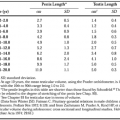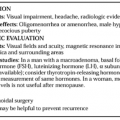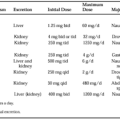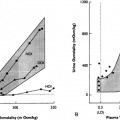ADRENOCORTICOTROPIN DEFICIENCY
Part of “CHAPTER 17 – HYPOPITUITARISM“
The HPA axis is the most crucial and may be the most challenging pituitary axis to evaluate, because symptoms and signs of ACTH and cortisol deficiency are often nonspecific. Selective ACTH deficiency is rare; usually, other pituitary hormones are deficient as well.26
SYMPTOMS
Physiologic effects of cortisol are protean. Consequently, cortisol deficiency often leads to subtle, nonspecific manifestations, but may be life threatening. Symptoms include weakness, fatigue, weight loss, and diminished sense of well-being. If a patient has neuroglycopenic symptoms and documented fasting hypoglycemia, evaluation for ACTH deficiency is indicated, along with a search for other causes (see Chap. 158 and Chap. 161). Abdominal distress, including nausea and vomiting, is often noted. A history of recently discontinued glucocorticoids should be sought.
SIGNS
Protracted secondary ACTH deficiency may lead to pale skin—including nipples and areolae—with decreased ability to tan. Diminished axillary and pubic hair may occur, especially in women. Postural hypotension is often seen; the pulse rate may be inappropriately normal or slow if concomitant hypothyroidism is present. With more acute hypoadrenalism, or during time of significant physiologic stress, patients may present with shock, which can be resistant to therapy.
LABORATORY ASSESSMENT
The HPA axis comprises a tightly regulated feedback loop. The hypothalamus secretes corticotropin-releasing hormone (CRH) into the portal circulation, which is transported to the pituitary. There it acts to stimulate ACTH secretion into the peripheral circulation. ACTH stimulates cortisol secretion from the adrenal glands. Cortisol feeds back to inhibit CRH and ACTH secretion. Most cortisol is bound to cortisol-binding globulin (CBG), although the much smaller free or unbound component is the bioactive fraction. Factors that alter CBG production may affect total serum cortisol levels, which may not accurately reflect the free cortisol fraction. Estrogen stimulates hepatic production of CBG, whereas cirrhosis, nephrotic syndrome, and hyperthyroidism may lower CBG. However, in most clinical contexts, the total serum cortisol level is used to determine whether the adrenal glands are functioning properly. Many glucocorticoid preparations cross-react with the cortisol assay and should be avoided within 24 hours of testing.
Stay updated, free articles. Join our Telegram channel

Full access? Get Clinical Tree








